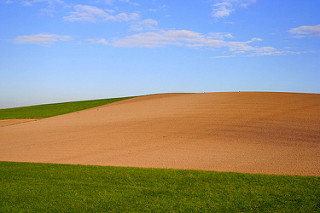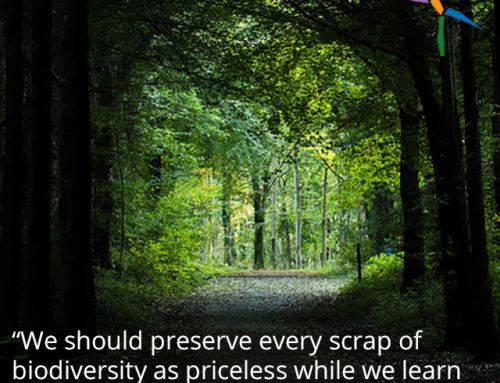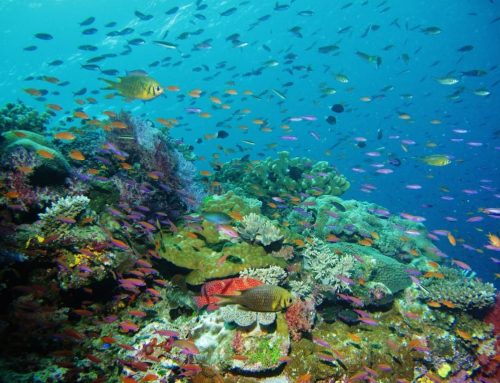There are parts of helping to preserve the planet that you can control as elements of living a Postconsumer lifestyle, but there are also parts that may be happening regardless of the small but ultimately highly important changes in our lives that we all need to make. Two of those potential inevitabilities are the phenomena of peak water and peak soil. It’s entirely possible that you’ve heard these terms tossed about without ever giving real thought to what they mean or the science behind them. If that describes you, then this is the read for you! And if it describes somebody that you know, then this is a great piece to pass along to them.
So, what are peak water and peak soil? Are they even real things? And what can we do to manage them? Let’s take a look.
The Origin of the Term: Peak Oil
Of course, it shouldn’t necessarily be surprising that it wasn’t the most vital of natural resources (water and soil) that launched the discussion of “peaks.” It was, in fact, oil. Peak oil, quite simply, is the point at which the maximum amount of oil extraction from the earth has occurred, after which point it will be in a terminal decline. The formula for determining peak oil was actually created in 1956, which somewhat obviously leaves one wondering why alternative energy sources haven’t been a priority since it was first confirmed that oil production would at some point peak and decline. But we are not here to judge! While there have been several attempts to narrow down when peak oil will occur, the most frequently used operational one at this point is 2015. However, 1995, 2008 and other now-past dates have all been targeted at one point or another.
So, now, understanding how peak oil originated and subsequently became a large talking point, we can move on to peak soil and peak water.
Peak Soil: It’s Like Peak Oil But Worse
To be fair, we just stole that subheadline! Not surprisingly, peak soil refers to the point at which we will have reached a moment where we no longer have enough fertile soil to sustain the world’s populations. What do we mean when we say “sustain the world’s populations?” We mean grow food and provide pastureland so that people can meet the basic life requirement of eating. According to Resilience.org, at present the world is losing soil at a rate of twenty times faster than it can replenish it. At the same time, the world’s population (ie: people who will need to eat) is increasing and, according to United Nations projections, is expected to reach 9.5 billion by 2050.
What destroys soil? There are obvious natural soil destructors, such as soil that is scorched by a drought or washed away by tides (though, somewhat obviously, one might question if the speed of these events and their impact on soil isn’t a result of man-induced climate change). However, if those were the only destroyers of soil, there would still be a fighting chance. But it’s not surprising that much of the world’s soil destruction is due to urban and building development as well as chemical dumping.
And soil isn’t easily replaced. It actually takes tens of thousands of years to make about six inches of useable top soil. And it’s not just about food. Peak soil will also make the use of many biofuels impossible, making the peak oil situation even worse.
Of course, GMO food, indoor growing and synthesized meat may be solutions to staving off world hunger. They also, most likely, are not solutions that the readers of this article are enthusiastic about.
Peak Water: Down the Drain
Peak water is the latest realization that our resources may fall shallow of our needs. This one is often the hardest one for Americans, who have ample access to water, to recognize. But the truth is that, globally, a child dies because of lack of access to water almost every twenty seconds.
Most of the world’s drinkable and usable water resides in underground lakes and aquifers, a finite supply to say the least. Not only is the planet simply becoming drier as it becomes hotter and water sources such as glaciers melt away, but the world is particularly guilty of contaminating water supplies with chemicals. That may mean you. Every time you empty a skin care product or unused medication into your skin, it enters the water supply.
In many cases, particularly in the western world, the realities of resource diminishment haven’t been felt yet. However, they are very, very real. And it only takes small actions by individuals to add years of viability to each of these resources. Shorter showers, turned off taps and responsible disposal methods can all add up to more “miles per gallon” for our remaining soil and water.
Have a fact we missed about peak soil and peak water? Tell us about it on Facebook, Twitter, Pinterest or Instagram.
Photo Credit: lanier67 via Flickr





